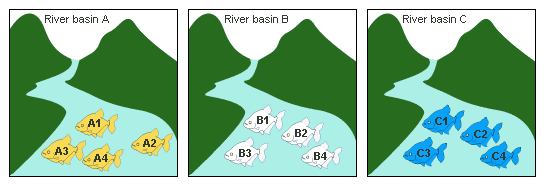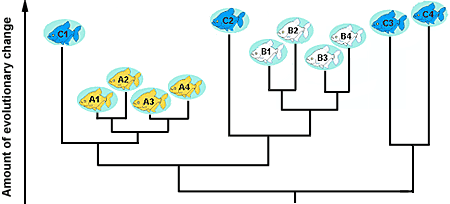Using evolution to get the most bang from your conservation buck
 Because of limited resources, conservationists must inevitably make a difficult decision — which ecosystems should we try to preserve? Studying the evolutionary history of the organisms that comprise those ecosystems can help us make decisions that maximize the biodiversity preserved.
Because of limited resources, conservationists must inevitably make a difficult decision — which ecosystems should we try to preserve? Studying the evolutionary history of the organisms that comprise those ecosystems can help us make decisions that maximize the biodiversity preserved.
By some estimates, we are losing biodiversity at a rate that will halve the number of species on Earth within the next 100 years.1 There are many reasons for trying to slow this rate of loss, but it is certain that, no matter what measures we take, we simply will not be able to save everything. We will have to decide which species and habitats to concentrate our efforts on — and evolutionary history can help us make these difficult choices.
A “saved” species will not be safe for long if its habitat has been destroyed — so conservation efforts have increasingly focused on preserving entire ecosystems, along with the species that comprise them. But how do we decide which ecosystems to preserve? Many scientists argue that we should prioritize ecosystems with the highest biodiversity — and, although there are many other important considerations involved in making these decisions, phylogenetics provides a useful measure of biodiversity.
The following simplified example illustrates how phylogenetics can aid conservation efforts. Imagine that a government only has the resources to create a preserve in one of three river basins (A, B or C below), and a local biologist is hired to help choose the location of the preserve.

She discovers that each river basin happens to support four related fish species, among other organisms, and she constructs a phylogeny for that fish clade.

In this phylogeny, the vertical length of each branch indicates the amount of evolutionary change that occurred in that lineage. The four species in river basin A cluster in a tightly-knit clade, with little evolutionary differentiation among species, while river basin B supports a more diverse clade of fish — note the longer branches for clade B. River basin C, supports fish that are rather distantly related to one another and that have evolved in different directions.
Based on this information, the biologist might recommend preserving basin C since it supports a more diverse assemblage of species. But of course, in real life, many more considerations — such as the status of other organisms, whether the species are found only locally or are widely distributed, and the economic value of the area — are involved in making such decisions. Nonetheless, evolutionary history makes a more meaningful measure of biodiversity than mere species counts, and can help conservation efforts preserve more genetic, morphological, and ecological diversity.
